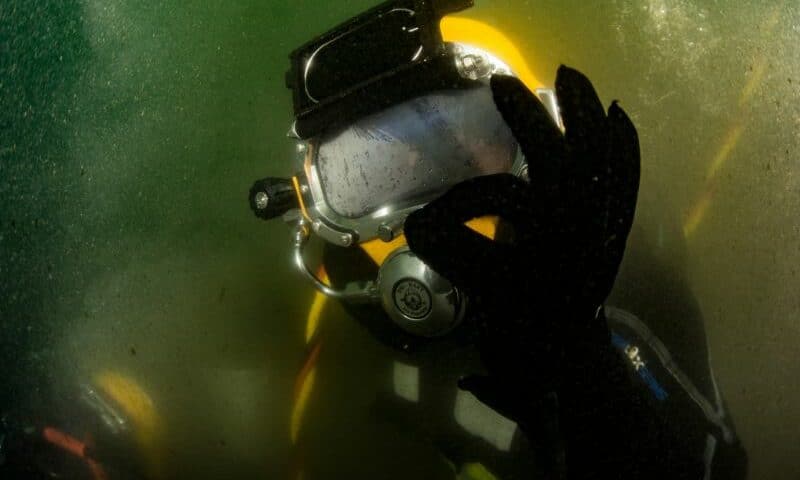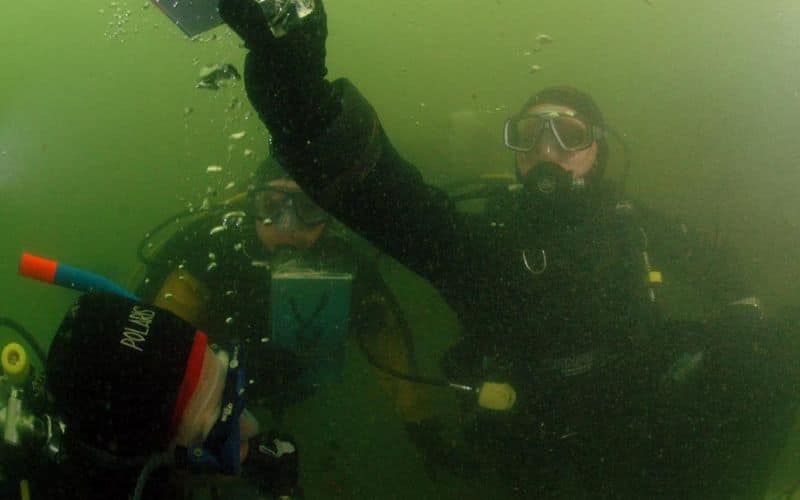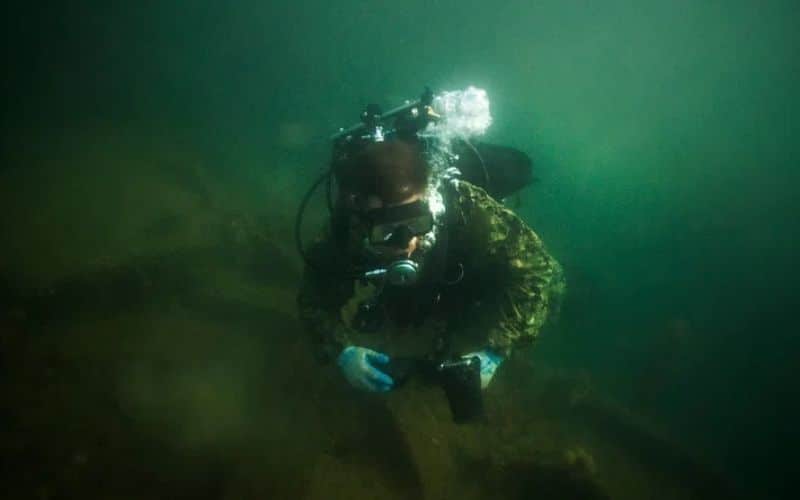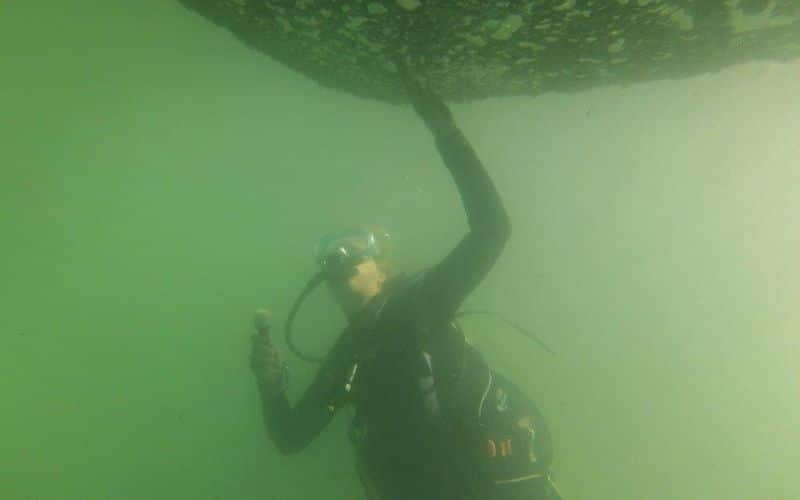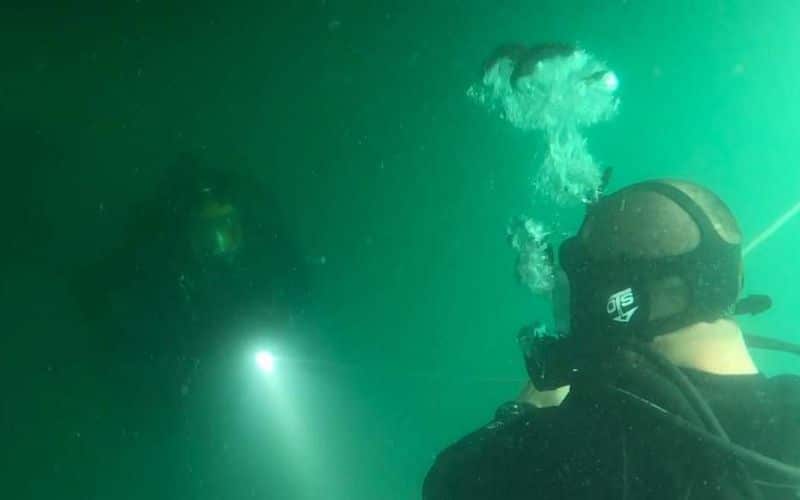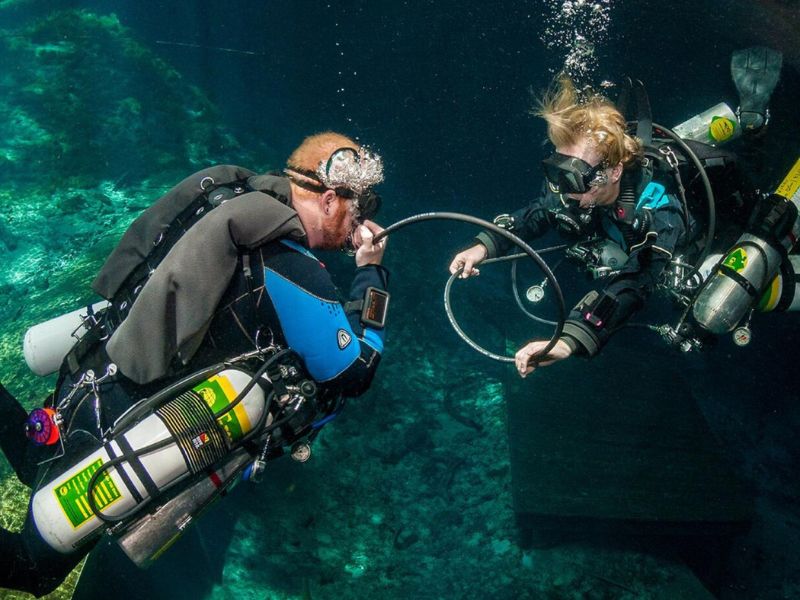3.3. Skills And Techniques for Diving in Reduced Visibility
Use reels. Who said reels are only for caves or wrecks? If you know the water will be murky during your dive, use one. Attach the reel to something near the anchor (not directly to the anchor in case it’s raised) and unwind it as you progress. Some technical divers tie the reel line to the lifeline at 100 feet/30 meters to ascend directly to that depth for their decompression stop. Always retrace your steps.
Proceed at a slow, steady pace. Reducing your pace in low-visibility diving helps you maintain better discipline and improve crucial aspects: buoyancy control is easier without frantic kicking, you’ll use less air, and avoiding unnecessary wandering reduces the risk of getting lost. Plus, you can listen – wrecks often make sounds.
Hand signals are different: When visibility is zero, communicate with your buddy using light or touch signals. These are the only ways to understand each other.
Utilize your underwater navigation skills. Again, preparation is crucial in low-visibility diving. Find reference points: rocks, pinnacles, bends, the seafloor, even your bubbles (which always ascend). Heavier objects like your gauge hang downward. Knowing your relative position to these elements makes orientation easier even with low visibility.
Stick to the reef and avoid open areas: If you went with the wall on your right, return with it on your left. And for goodness’ sake, use your compass to avoid unwanted direction changes.
Lifeline buoys are your best friends in low visibility diving. They constantly indicate your position to the surface boat, assist in your descent and ascent, and help keep you on course if attached to something at the bottom.
Deploy an SMB if lost: If you’re spinning around, deploying an SMB signals the surface. In a current, tie it to the dive site to prevent drifting further.
Ascend safely and respect decompression stops.
Buoyancy control is crucial in low visibility diving to avoid stirring up sediment. Kicking wildly will raise all the muck from the bottom, especially in confined spaces like caves, making visibility even worse.
Help your buddies: If you’re at the end of the line, a clumsy diver stirring up silt will obliterate your visibility. How considerate!
3.4. The Best Dive Buddy for Poor Visibility Is the One You Don’t Lose
The most important thing in low visibility diving is not losing sight of your buddy. Have a joint dive plan that includes how to maintain contact even when you can’t see each other. Practice signals before diving. In very poor visibility, hand signals won’t work. Decide on how to communicate: taps on the tank, flashlight signals, holding hands…
Buddy diving is essential: but let’s admit it, in crystal-clear water we sometimes relax a bit. Mistake! In murky waters, discipline is paramount: stay close to your buddy (if necessary, tie yourselves with a buddy line), communicate constantly, and dive as a team. The extra safety from perfect collaboration is worth it. Four eyes are better than two!




